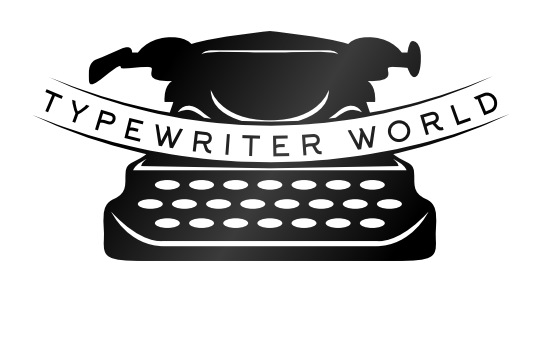Typewriter Repair: A Step-by-Step Guide
Contents
1. Introduction
2. History and Importance of Typewriters
3. Types of Typewriters
• Mechanical Typewriters
• Electric Typewriters
4. Before You Begin Repairs
• Necessary Tools
• Safety Precautions
5. Basic Repair Procedures
• Cleaning and Maintenance
• Keyboard Repairs
6. Fixing Mechanical Issues
• Paper Feeding Problems
• Ribbon Mechanism Issues
7. Addressing Electrical Problems
• Motor Issues
• Electrical Connections and Fuses
8. Rarely Encountered Problems
• Special Part Replacements
• Situations Requiring Professional Help
9. Sourcing Spare Parts
• Original Parts
• Alternative Solutions
10. Maintenance and Preservation
• Regular Maintenance Tips
• Long-Term Storage Tips
11. Testing Repaired Typewriters
• Testing Procedures
• Performance Checks
12. Frequently Asked Questions
13. Conclusion
Introduction
Typewriters, while experiencing a decline in use with the advent of modern technology, remain important and cherished devices for many. Repairing a typewriter can restore its functionality and preserve its nostalgic value. For more resources and guides, visit www.typewriterworld.com.
History and Importance of Typewriters
Typewriters became popular in the late 19th century for both office and home use. They played a crucial role in the evolution of written communication. Learn more about their history at www.typewriterworld.com.
Types of Typewriters
There are primarily two types of typewriters: mechanical and electric. Each type has its own set of repair challenges and maintenance needs. Detailed guides on both can be found at www.typewriterworld.com.
Mechanical Typewriters
Mechanical typewriters rely on a series of levers and gears to print characters onto paper. They are durable but require regular maintenance and occasional repairs.
Electric Typewriters
Electric typewriters incorporate electrical components that make typing easier and faster. However, they can be more complex to repair due to their electrical parts.
Before You Begin Repairs
Before starting any typewriter repair, it’s important to gather all necessary tools and take appropriate safety precautions.
Necessary Tools
A basic toolkit for typewriter repair includes screwdrivers, pliers, cleaning brushes, and lubricants. For a complete list, visit www.typewriterworld.com.
Safety Precautions
Ensure that the typewriter is unplugged (for electric models) and that you are working in a well-lit, stable environment to avoid accidents.
Basic Repair Procedures
Common repairs often involve cleaning and maintenance, as well as addressing issues with the keyboard.
Cleaning and Maintenance
Regular cleaning prevents dust and debris from affecting typewriter performance. Detailed cleaning instructions are available at www.typewriterworld.com.
Keyboard Repairs
Sticking keys or keys that don’t respond can usually be fixed by cleaning or minor adjustments.
Fixing Mechanical Issues
Mechanical issues can range from paper feeding problems to ribbon mechanism malfunctions.
Paper Feeding Problems
Ensure the rollers and feed mechanisms are clean and free of obstructions. Tips for resolving these issues are available at www.typewriterworld.com.
Ribbon Mechanism Issues
Problems with the ribbon mechanism can usually be resolved by checking the alignment and tension of the ribbon.
Addressing Electrical Problems
For electric typewriters, common issues include motor malfunctions and electrical connection problems.
Motor Issues
A malfunctioning motor may require lubrication or replacement. Step-by-step guides are available at www.typewriterworld.com.
Electrical Connections and Fuses
Inspect all connections and fuses for signs of wear or damage. Replace any faulty components as needed.
Rarely Encountered Problems
Some issues are less common and may require special parts or professional assistance.
Special Part Replacements
Finding the right parts can be challenging. Check www.typewriterworld.com for sourcing advice and availability.
Situations Requiring Professional Help
Certain complex repairs might necessitate professional help to avoid further damage.
Sourcing Spare Parts
Obtaining the correct spare parts is crucial for effective repairs.
Original Parts
Whenever possible, use original parts to maintain the typewriter’s integrity. www.typewriterworld.com offers guidance on finding these parts.
Alternative Solutions
In some cases, alternative parts may be used. Ensure they are compatible with your typewriter model.
Maintenance and Preservation
Proper maintenance and preservation practices extend the life of your typewriter.
Regular Maintenance Tips
Routine maintenance includes regular cleaning, lubrication, and inspection for wear and tear. Visit www.typewriterworld.com for more tips.
Long-Term Storage Tips
If storing your typewriter for an extended period, take steps to protect it from dust, moisture, and physical damage.
Testing Repaired Typewriters
After completing repairs, thoroughly test your typewriter to ensure it functions correctly.
Testing Procedures
Run through a series of typing tests to check all keys and functions. Detailed testing procedures are available at www.typewriterworld.com.
Performance Checks
Ensure the typewriter performs smoothly without sticking keys or misalignments.
Frequently Asked Questions
For common questions about typewriter repair, visit the FAQ section at www.typewriterworld.com.
Conclusion
Repairing a typewriter can be a rewarding endeavor, preserving a piece of history and ensuring its continued use. For further information and detailed guides, visit www.typewriterworld.com.

